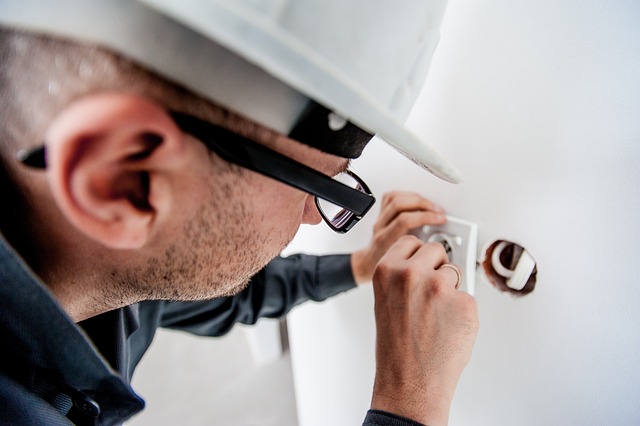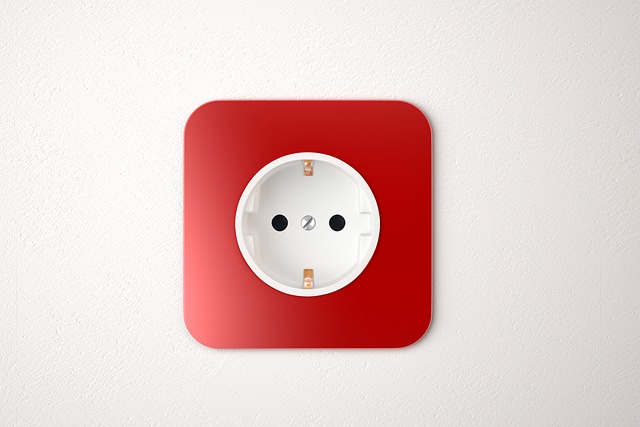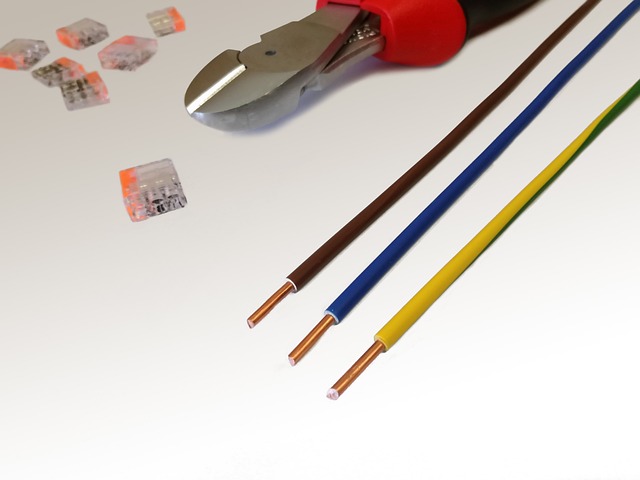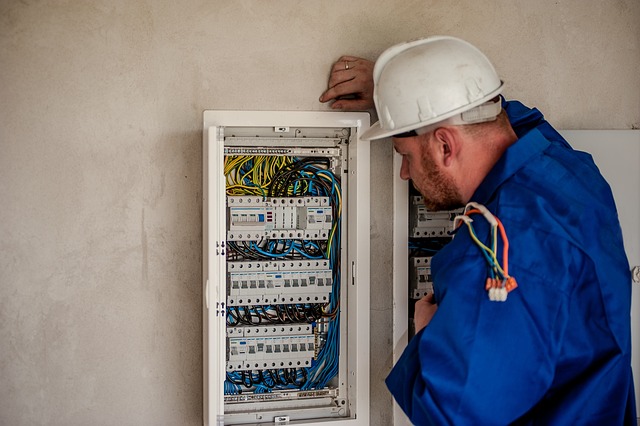Electricians are crucial for building inspections, ensuring electrical safety by detecting hazards like faulty wiring and non-code installations. They adhere to National Electrical Code (NEC) standards, guarding against fires and shocks. During inspections, they verify structural integrity, fire systems, exit signage, and ventilation, identifying risks related to outdated or improperly installed fixtures. Qualified electricians document findings, providing detailed reports for risk management. Continuous learning keeps them updated on industry standards and safety protocols, enabling them to interpret codes, mitigate hazards, and contribute to safe living environments.
An electrician’s role goes beyond wiring; they are crucial in ensuring building safety through comprehensive inspections. This article delves into the essential tasks of these professionals, focusing on code compliance and risk identification. From understanding key inspection areas to documenting findings, every step is vital for mitigating hazards. Learn how electricians navigate complex regulations, stay up-to-date with training, and become indispensable resources in ensuring structures meet safety standards. Discover why their expertise is invaluable in maintaining secure environments.
- Understanding the Role of an Electrician in Building Inspections
- Key Areas to Inspect for Code Compliance
- Identifying Safety Risks During Routine Checks
- Documentation and Reporting for Effective Risk Mitigation
- Continuous Learning and Professional Development for Electricians
Understanding the Role of an Electrician in Building Inspections

When conducting building inspections for code compliance and safety, electricians play a pivotal role in ensuring that electrical systems meet required standards. They inspect wiring, outlets, panels, and other components to identify potential hazards like faulty connections, outdated wiring, or overloaded circuits. By doing so, they help prevent electrical fires, shocks, and other accidents.
An electrician’s expertise is crucial for identifying compliance with local electrical codes and National Electrical Code (NEC) standards. They look for proper grounding, adequate circuit protection, and correct installation techniques. Moreover, they assess the overall integrity of the electrical system to ensure it meets modern safety requirements, thereby contributing significantly to a building’s overall safety and habitability.
Key Areas to Inspect for Code Compliance

When conducting a building inspection for code compliance, several key areas require meticulous attention. A thorough check involves assessing structural integrity, fire safety systems, and electrical installations. Electricians play a pivotal role in ensuring these aspects meet local codes. They inspect wiring for proper grounding, voltage levels, and any signs of damage or wear, all while confirming the functionality of circuit breakers and fuses.
Additionally, examining exit signage, emergency lighting, and smoke detectors is crucial. These safety measures must be operational and clearly visible to ensure efficient evacuation during an emergency. Proper ventilation and adequate clearances around essential equipment, such as water heaters and furnaces, are other critical factors that contribute to a building’s overall safety and code compliance.
Identifying Safety Risks During Routine Checks

During routine building inspections, identifying safety risks is a multifaceted process that involves meticulous observation and expert knowledge. A qualified electrician plays a pivotal role in this regard, as they can pinpoint potential hazards related to electrical systems. These may include outdated wiring, faulty outlets, or improperly installed fixtures—all of which pose significant fire and shock risks.
In addition to electrical concerns, inspectors should also look for structural integrity issues, such as compromised walls, floors, or roofs, as well as signs of water damage, which can lead to mold growth and other health hazards. Regular checks ensure that buildings meet safety standards and protect occupants from unforeseen dangers.
Documentation and Reporting for Effective Risk Mitigation

Effective risk mitigation in building inspections hinges on thorough documentation and reporting by qualified electricians. During an inspection, electricians meticulously record observations, identifying potential code violations or safety hazards. This includes documenting structural integrity, electrical systems, plumbing, and any signs of wear or damage. By creating detailed reports, they provide a clear picture of the property’s current state, highlighting areas that require immediate attention or potential long-term solutions.
Accurate documentation serves as a vital tool for both property owners and insurance companies. Electricians’ reports enable proactive measures to address identified risks, ensuring the building meets safety standards. Moreover, these records are essential in legal situations, providing evidence of due diligence and responsible maintenance, which can protect owners from liability claims.
Continuous Learning and Professional Development for Electricians

As an electrician, continuous learning and professional development are essential components of career success. Staying up-to-date with industry standards, new technologies, and safety protocols ensures that electricians perform their tasks competently and safely. Regular training sessions, workshops, and online courses allow professionals to expand their knowledge base, enhancing their problem-solving skills and adaptability in a constantly evolving field.
These learning opportunities are particularly crucial given the dynamic nature of electrical work. Electricians must be adept at interpreting complex building codes, identifying potential hazards, and implementing effective risk mitigation strategies. By investing in their professional growth, electricians can better serve clients, ensure code compliance, and contribute to safer living and working environments.
Building inspections are vital for ensuring electrical safety and code compliance. Electricians play a crucial role in this process, meticulously examining key areas to identify potential risks. By staying updated through continuous learning and professional development, they can effectively document and report findings, fostering a safer environment. This strategic approach not only mitigates risks but also promotes the industry’s overall standards. Relying on a qualified electrician for inspections is essential to maintain a robust and secure built environment.
